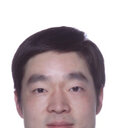Comparison of parathyroid hormone (1-34) and elcatonin in postmenopausal women with osteoporosis: an 18-month randomized, multicenter controlled trial in China.
الكلمات الدالة
نبذة مختصرة
BACKGROUND
Recombinant human parathyroid hormone (1-34) (rhPTH (1-34)) is the first agent in a unique class of anabolic therapies acting on the skeleton. The efficacy and safety of long-term administration of rhPTH (1-34) in Chinese postmenopausal women had not been evaluated. This study compared the clinical efficacy and safety of rhPTH (1-34) with elcatonin for treating postmenopausal women with osteoporosis in 11 urban areas of China.
METHODS
A total of 453 postmenopausal women with osteoporosis were enrolled in an 18-month, multi-center, randomized, controlled study. They were randomized to receive either rhPTH (1-34) 20 µg (200 U) daily for 18 months, or elcatonin 20 U weekly for 12 months. Lumbar spine (L1-4) and femoral neck bone mineral density (BMD), fracture rate, back pain as well as biochemical markers of bone turnover were measured. Adverse events were recorded.
RESULTS
rhPTH (1-34) increased lumbar BMD significantly more than did elcatonin after 6, 12, and 18 months of treatment (4.3% vs. 1.9%, 6.8% vs. 2.7%, 9.5% vs. 2.9%, P < 0.01). There was only a small but significant increase of femoral neck BMD after 18 months (2.6%, P < 0.01) in rhPTH groups. There were larger increases in bone turnover markers in the rhPTH (1-34) group than those in the elcatonin group after 6, 12, and 18 months (serum bone-specific alkaline phosphatase (BSAP) 93.7% vs. -3.6%; 117.8% vs. -4.1%; 49.2% vs. -5.8%, P < 0.01; urinary C-telopeptide/creatinine (CTX/Cr) 250.0% vs. -29.5%; 330.0% vs. -41.4%, 273.0% vs. -10.6%, P < 0.01). rhPTH (1-34) showed similar effect of pain relief as elcatonin. The incidence of clinical fractures was 5.36% (6/112) in elcatonin group and 3.2% (11/341) in rhPTH (1-34) group (P = 0.303). Both treatments were well tolerated. Hypercaluria (9.4%) and hypercalcemia (7.0%) in rhPTH (1-34) group were transient and caused no clinical symptoms. Pruritus (8.2% vs. 2.7%, P = 0.044) and redness of injection site (4.4% vs. 0, P = 0.024) were more frequent in rhPTH (1-34). Nausea/vomiting (16.1% vs. 6.2%, P = 0.001) and hot flushes (7.1% vs. 0.6%, P < 0.001) were more common in elcatonin group.
CONCLUSIONS
rhPTH (1-34) was associated with greater increases in lumbar spine BMD and bone formation markers. It could increase femoral BMD after 18 months of treatment. rhPTH could improve back pain effectively. The results of the present study indicate that rhPTH (1-34) is an effective, safe agent in treating Chinese postmenopausal women with osteoporosis.





